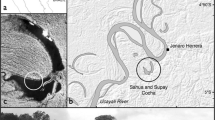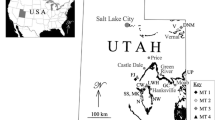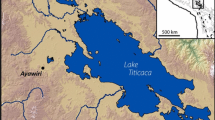Summary
From four caves in the Tehuacan Valley, excavated by the Proyecto ArqueológicoBotánico Tehuacán, seeds of ehupandilla (Cyrtocarpa procera) and cosahuico (Sideroxylon) cf.tempisque) were recovered. Measurements of these show that a definite increase in size took place. Chupandilla seeds showed little increase in the lower levels (ea. 6500 to 2300 B. C.) but from ca. 900 B. C. to A. D. 1500 there was a constant increase in size. During this period, chupandilla showed no significant change in fruit proportions. Cosahuico, on the other hand, showed an increase in size beginning in levels whose earliest date is ca. 4800 B. C. and the increase continued to the top at ca. A. D. 1500. Furthermore, cosahuico seeds became proportionally more elongate from ca. 4800 to 200 B. C, less elongate from ca 200 B. C. to A. D. 700 and then again more elongate from ca. A. D. 700 to 1500. Especially notable size increases in the seeds of both fruits from Purrón Cave (TC 272) can be associated with the building of a dam and extensive irrigation system near that cave. Undoubtedly, these changes in size and shape are attributable to cultivation of the trees and active selection of seeds from large fruit for the propagation of new trees. This datum further strengthens the premises previously established by a study of avocado cotyledons from the same area (6).
Similar content being viewed by others
Literature Cited
MacNeish, R. S. 1961. First annual report of the Tehuacan Archaeological-Botanical Project. Andover, Massachusetts.
-. 1962. Second annual report of the Tehuacán Archaeological-Botanical Project. Andover, Massachusetts.
— 1964. Ancient mesoamerican civilization. Sci.143: 531–537.
Martinez, M. 1959. Plantas utiles de la flora Mexicana. Mexico, D.F.
Smith, C. E., Jr. 1965. Flora, Tehuaciin Valley. Fieldiana: Bot.31(4): 101–143.
— Jr. 1966. Archeological evidence for selection in avocado. Econ. Bot.20: 169–175.
Author information
Authors and Affiliations
Rights and permissions
About this article
Cite this article
Smith, C.E. Archeological evidence for selection of chupandilla and cosahuico under cultivation in Mexico. Econ Bot 22, 140–148 (1968). https://doi.org/10.1007/BF02860557
Received:
Issue Date:
DOI: https://doi.org/10.1007/BF02860557




